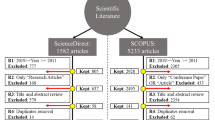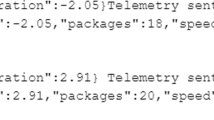Abstract
Quality risks determined by inspection economies represent a difficult controllable variable in complex manufacturing environments. Planning a quality strategy without being able to predict its effectiveness in all the stations of a system might eventually lead to a loss of time, money and resources. The use of one station to regularly select the samples for a production segment introduces relevant complexities in the analysis of the available quality measurements when they are referred to the other stations in that segment. The multiple streams of product through the parallel machines of the stations and the cycle time randomness, responsible for variation of the item sequence order at each production step, nullify the regularity of the sampling patterns at the machines of the non-sampling stations. This work develops a fundamental model which supports the prediction of the ‘quality risk’, at a given machine in the non-sampling stations, associated with a particular sampling policy for a multi-product, multi-stage, parallel processing manufacturing system subjected to sequence disorder and multiple stream effects. The rationale on which the model is based and successful applications of the model, to scenarios structurally different from those used for its development, give confidence in the general validity of the model here proposed for the quality risk prediction at non-sampling station machines.













Similar content being viewed by others
References
Chakraborty, T., Giri, B., & Chaudhuri, K. (2008). Production lot sizing with process deterioration and machine breakdown. European Journal of Operational Research, 185(2), 606–618.
Chien, C., Hsu, S., Peng, S., & Wu, C. (2000). A cost-based heuristic for statistically determining sampling frequency in a wafer fab. In Semiconductor manufacturing technology workshop (Cat. No. 00EX406) (pp. 217–229).
Colledani, M., & Tolio, T. (2006). Impact of quality control on production system performance. CIRP Annals—Manufacturing Technology, 55(1), 453–456.
Colledani, M., & Tolio, T. (2009). Performance evaluation of production systems monitored by statistical process control and off-line inspections. International Journal of Production Economics, 120(2), 348–367.
Colledani, M., & Tolio, T. (2010). Integrated analysis of quality and production logistics performance in manufacturing lines. International Journal of Production Research, 49(2), 485–518.
Fan, C., Guo, R., Chang, S., & Lee, J. (1996). Abnormal trend detection of sequence-disordered data using EWMA method. In IEEE/SEMI advanced semiconductor manufacturing conference.
Fan, C., Guo, R., & Chang, S. (1997). EWMA/SD: an end-of-line SPC scheme to monitor sequence-disordered data. In International workshop on statistical metrology.
Fan, C., Chang, S., Guo, R., Kung, H., You, J., Chen, H., Lin, S., & Wei, J. (1999). SHEWMAC: an end-of-line SPC scheme for joint monitoring of process mean and variance. In IEEE international symposium on semiconductor manufacturing conference (pp. 233–236).
Fan, C., Chang, S., Guo, R., Kung, H., You, J., Chen, H., Lin, S., & Wei, C. (2000). SHEWMAC: an end-of-line SPC scheme via exponentially weighted moving statistics. In Semiconductor manufacturing technology workshop (pp. 268–278).
Fan, C., Guo, R., Chen, A., Hsu, K., & Wei, C. (2001). Data mining and fault diagnosis based on wafer acceptance test data and in-line manufacturing data. In IEEE international symposium on semiconductor manufacturing conference (pp. 171–174).
Gershwin, S., & Schick, I. (2007). A taxonomy of quality/quantity issues in manufacturing systems. In 6th international conference on analysis of manufacturing systems, Lunteren, The Netherlands.
Hall, G., Young, R., Dunne, M., & Muro, M. (2008). A quality-cost model of in-line inspections for excursion detection and reduction. In IEEE/SEMI advanced semiconductor manufacturing conference (pp. 273–277).
Hsu, H. (1984). A hybrid inspection system for the multistage production process. International Journal of Production Research, 22(1), 63–69.
Inman, R., Blumenfeld, D., Huang, N., & Li, J. (2003). Designing production systems for quality: research opportunities from automotive industry perspective. International Journal of Production Research, 41(9), 1953–1971.
Ioannidis, S., Kouikoglou, V., & Phillis, V. (2004). Coordinating quality, production and sales in manufacturing systems. International Journal of Production Research, 42(8), 3947–3956.
Jang, W., Wang, E., & Akella, R. (2000). Economic in-line inspection sampling strategy with learning effects. International Journal of Production Research, 38(18), 4811–4821.
Kaya, M., & Özer, Ö. (2009). Quality risk in outsourcing: noncontractible product quality and private quality cost information. Naval Research Logistics, 56, 669–685.
Kim, J., & Gershwin, S. (2005). Integrated quality and quantity modeling of a production line. OR-Spektrum, 27(2–3), 287–314.
Kim, J., & Gershwin, S. (2008). Analysis of long flow lines with quality and operational failures. IIE Transactions, 40(3), 284–296.
Kouikoglou, V., & Phillis, Y. (2002). Design of product specifications and control policies in a single-stage production system. IIE Transactions, 34(7), 591–600.
Kuo, W., Akella, R., & Fletcher, D. (1997). Adaptive sampling for effective multi-layer defect monitoring. In IEEE international symposium on semiconductor manufacturing conference (Cat. No. 97CH36023) (pp. D1–D4).
Lanning, J., Montgomery, D., & Runger, G. (2003). Monitoring a multiple stream filling operation using fractional sample. Quality Engineering, 15(2), 183–195.
Li, J., Blumenfeld, D., & Marin, S. (2008). Production system design for quality robustness. IIE Transactions, 40(3), 162–176.
Lin, L., Chen, S., Bousetta, A., Yang, R., & Liao, J. (2005). Improving defect capture rate for excursion detection. Semiconductor International, 28(9), 55–58.
Liu, X., MacKay, R., & Steiner, S. (2008). Monitoring multiple steam processes. Quality Engineering, 20, 296–308.
McIntyre, M., Nurani, R., & Akella, R. (1996). Key considerations in the development of defect sampling methodologies. In Proceedings of the 1996 IEEE/SEMI advanced semiconductor manufacturing conference and workshop (pp. 81–85).
Meneces, N., Olivera, S., Saccone, C., & Tessore, J. (2008). Statistical control of multiple stream processes: a Shewhart control chart for each stream. Quality Engineering, 20, 185–194.
Monijn-Dorgelo, F., & ter Horst, H. (1988). Expert systems for test structure data interpretation. In Proceedings of the 1988 IEEE international conference on microelectronic test structures (pp. 169–173).
Montgomery, D. (2008). Introduction to statistical quality control (5th ed.). New York: Wiley.
Oppermann, M., Sauer, W., Wohlrabe, H., & Zerna, T. (2001). Optimisation of inspection strategies by use of quality cost models. In Proceedings of the 51st electronic components and technology conference (Cat. No. 01CH37220) (pp. 1321–1325).
Oppermann, M., Sauer, W., Wohlrabe, H., & Zerna, T. (2003). New quality cost models to optimize inspection strategies. IEEE Transactions on Electronics Packaging Manufacturing, 26(4), 328–337.
Pak, J., Kittler, R., Hopper, B., & Wen, P. (1997). Advanced methods for analysis of wafer-to-wafer yield variation. In Proceedings of the IEEE/SEMI advanced semiconductor manufacturing conference.
Penn, M., & Raviv, T. (2007). Optimizing the quality control station configuration. Naval Research Logistics, 54(3), 301–314.
Rotondo, A. (2010). Analysis of inspection policy and risk in high product mix multi-stage flexible manufacturing systems subjected to sequence-disorder and multiple stream effects. PhD thesis, School of Mechanical and Manufacturing Engineering, Dublin City University, Ireland.
Sarhangian, V., Vaghefi, A., Eskandari, H., & Ardakani, M. (2008). Optimizing inspection strategies for multi-stage manufacturing processes using simulation optimization. In Proceedings of the 2008 winter simulation conference, Miami, FL, USA.
Sarker, B., Jamal, A., & Mondal, S. (2008). Optimal batch sizing in a multi-stage production system with rework consideration. European Journal of Operational Research, 185(3), 915–929.
Tapiero, C., & Hsu, L. (1987). Quality control of the m/m/1 queue. International Journal of Production Research, 25(3), 447–455.
Young, H. (1963). On the optimum location of checking stations. Operations Research, 11(5), 721–731.
Acknowledgements
This research has been funded by an Enterprise Ireland Innovation Partnership Scheme under the Government of Ireland’s National Development Plan 2007–2013 and the European Union Structural Funds.
Author information
Authors and Affiliations
Corresponding author
Appendix
Appendix
The main effects plot for the mean time between samples reveals that all the three factors considered in the analysis, which are the line speed, the line configuration and the sampling intervals, impact this performance measure (Fig. 14(a)). The sampling interval proves the most affecting factor; the larger the sampling interval (level 1), the lower the sampling frequency, hence, the higher the mean time between samples. An enlarged line configuration (level 1) determines an increase in the mean time between samples at a machine level as the same number of items, both sampled and unsampled, is spread across a greater number of machines.
The impact of the line speed on the mean time between samples is ascribable to the potential influence that variations of the line speed can have on the inter-arrival time at a station level. Whenever the inter-arrival time is affected by variations of the line speed (e.g. in scenarios 3 and 4), then the mean time between samples will vary. The increase in the line speed for scenarios 3 and 4 is obtained by reducing the inter-arrival time of all the products in the segment; this necessarily means an increase of the time between samples as they arrive slower at each station and, as a consequence, at each machine. This observation on the line speed is confirmed by the results shown in the interaction plot for the mean time between samples (Fig. 14(b)). The line speed presents an impact on the mean time between samples only for the low level of the line configuration; for the original line configuration (level −1) the increase in line speed is obtained by reducing the inter-arrival time so that the inventory level in the segment could be reduced (scenarios 3 and 4). In the enlarged configuration (level 1), the line speed does not impact the mean time between samples. Figure 14(b) also suggests that the sampling interval does not interact with the other two factors. The factorial plots for the number of items between consecutive samples suggest that the sampling interval is the only affecting factor (Fig. 14(c)). The mean number of items between samples at a machine reduces when the sampling intervals are smaller; this means that the products are sampled more frequently. No interaction between the factors is detected (Fig. 14(d)).
The plots reported in this Appendix refer to the responses obtained at the machines of the first production station in the segment. The different cross flows observed at the different stations prevent considering the output data pertaining to the different stations as replications of the experimental plan. Similar results, to the ones shown here, were obtained for the other non-sampling stations.
Rights and permissions
About this article
Cite this article
Rotondo, A., Young, P. & Geraghty, J. Quality risk prediction at a non-sampling station machine in a multi-product, multi-stage, parallel processing manufacturing system subjected to sequence disorder and multiple stream effects. Ann Oper Res 209, 255–277 (2013). https://doi.org/10.1007/s10479-012-1145-y
Published:
Issue Date:
DOI: https://doi.org/10.1007/s10479-012-1145-y





